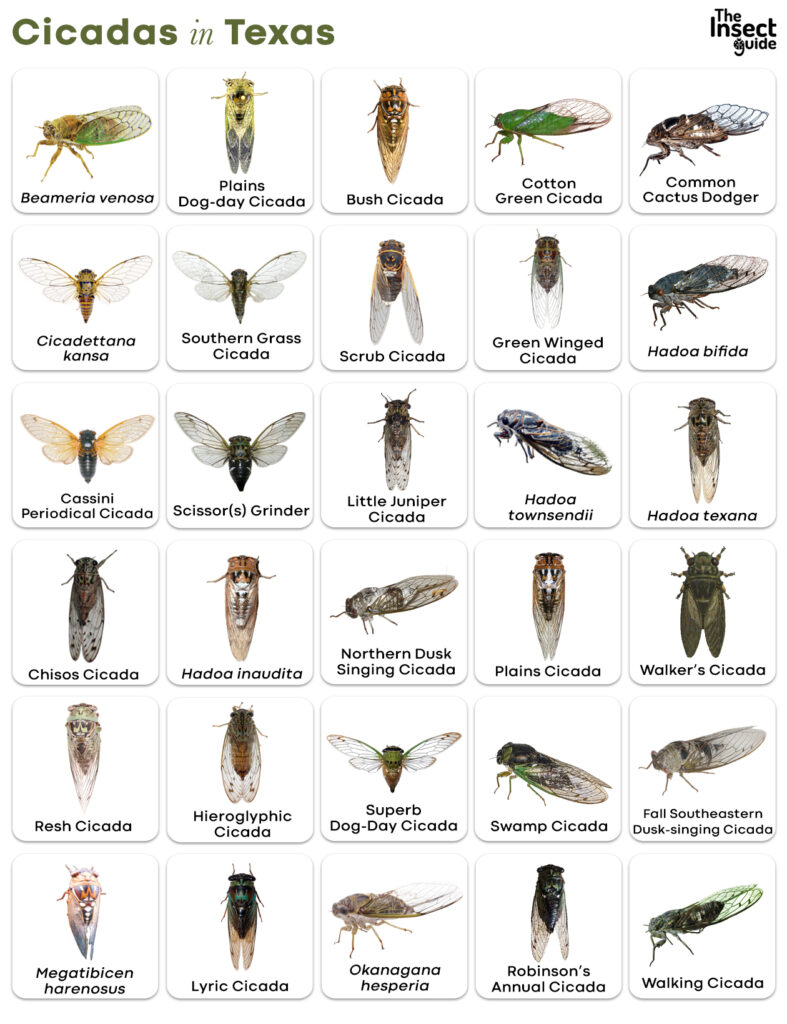Cicadas in Texas
Texas has about 40 species of cicadas. Its cicada season is from April to July. The annual cicadas come out in mid to late summer and have a life cycle of 2-5 years. The periodical bugs belong to broods IV and emerge earlier. Their high-pitched mating calls can get noisy at above 100 decibels.
The little mesquite cicada is the tiniest in the state, and the biggest is the giant cicada. In fact, the latter is the biggest in the Western Hemisphere and the loudest in Texas.
Types of Cicadas in Texas
- Beameria venosa
- Cactus Dodger
- Common Cactus Dodger
- Variegated Cactus Dodger
- Southern Grass Cicada
- Cicadettana camerona
- Cicadettana kansa
- Cicadettana texana
- Scrub Cicada
- Green Winged Cicada
- Hadoa bifida
- Hadoa chisosensis
- Hadoa duryi
- Hadoa inaudita
- Hadoa texana
- Hadoa townsendii
- Cassini Periodical Cicada
- Northern Dusk Singing Cicada
- Plains Cicada
- Bush Cicada
- Fall Southeastern Dusk-singing Cicada
- Megatibicen harenosus
- Walker’s Cicada
- Resh Cicada
- Great Pine Barrens Cicada
- Chisos Cicada
- Hieroglyphic Cicada
- Plains Dog-day Cicada
- Lyric Cicada
- Scissor(s) Grinder
- Robinson’s Annual Cicada
- Superb Dog-Day Cicada
- Swamp Cicada
- Okanagana hesperia
- Walking Cicada
- Cotton Green Cicada
- Okanagodes terlingua
- Pacarina puella
- Little Juniper Cicada
- Platypedia falcata
- Giant Cicada
Cicadas by Regions
Central Texas Cicadas: Resh Cicada, Superb Dog-Day Cicada or Superb Green Cicada, Hieroglyphic Cicada
FAQs
The annual cicadas come out every year in Texas, while the periodical cicadas appear every 13 or 17 years.
The cicada killer wasp eats cicadas in Texas.
The periodicals are gone by July-end while the annuals stick around till October in the state. The adults live for 4-6 weeks after emerging.





